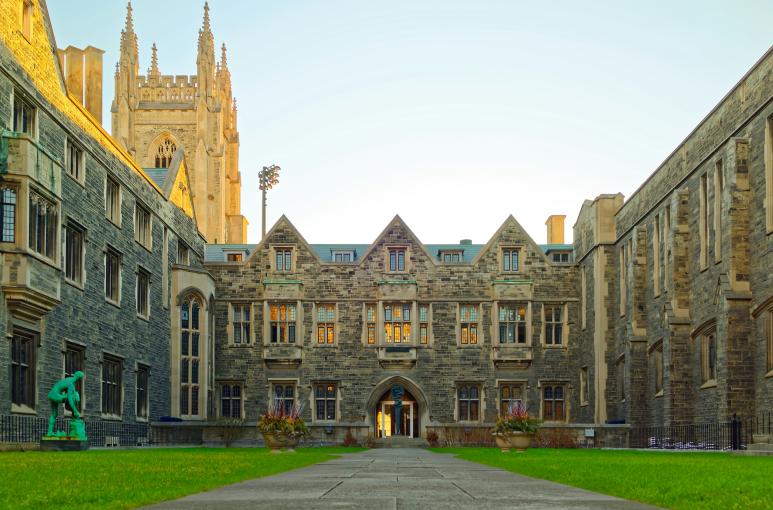For those who are preparing to study in Melbourne, there are a lot of issues that you need to consider. In particular, it is essential to know in advance about the local customs of Melbourne and the problems closely related to your study life, such as arriving in the country, renting an apartment, applying for a bank card and a phone card, and travelling.
Climate and Clothing for Studying in Melbourne
Melbourne is located in the southern hemisphere. Its climate is the opposite of ours, with spring from September to November, summer from December to February, and autumn from March to May. And winter from June to August.

The temperature in July, the coldest month of winter, is 3~15℃. The average temperature in January, the hottest month of summer, is about 25℃, with occasional high temperatures above 40℃. Melbourne’s climate is mild and comfortable, with low precipitation and relatively dry.
Considering Melbourne’s climate, international students don’t need to buy heavy clothing or bedding. Coats are usually enough to keep them warm in winter.
Melbourne’s local dress is mainly casual because there will be a particular temperature difference in the morning and evening. So you can consider the “dumpling” style.
In addition, clothes in Melbourne are more expensive than in China. So, international students can choose to buy some necessary garments in China.
The Entry Process for Studying in Melbourne
For international students coming to Melbourne for the first time, it is essential to understand the immigration process.

Step 1: Visa Preparation

Before entering Melbourne, you must ensure you have applied for a student visa and put important documents such as a visa confirmation letter, passport, and admission information in your carry-on baggage when you depart for subsequent checking.
Step 2. Fill in the Arrival Card
When the plane is about to arrive at Melbourne Airport, the flight attendant will give passengers an entry card, which includes personal information, items to be declared, contact information, the purpose of the visit, etc.
Step 3. Immigration Procedures
Find the ePassport self-service sign according to the signage at the airport and stop to print the self-service customs clearance slip, which can achieve fast customs clearance. The procedure is as follows:
Firstly, put your passport photo page into the machine with the photo page open and facing down according to the machine’s instructions. Then, choose the answers according to the questions displayed on the screen. Finally, you will get a self-service clearance card.
Then, walk to the Smart Gate door, get the self-service pass card inserted into the machine, take off the glasses and hat, face the camera to match, match the success of the ticket will prompt you to pick up the ticket, pick up the ticket after the gate opens automatically.
Note that a self-service passport needs an electronic passport; if it is an old passport that the machine does not recognise, it needs to go through the artificial channel.
Step 4. Baggage Claim
After completing the immigration procedures, follow the signs to the Luggage Claim area and wait patiently for your luggage to be delivered.
Step 5. Customs Inspection
Customs inspection is the last step before entering the country. After getting your luggage, queue up for customs inspection. When it is your turn, show your entry card to the staff, and if you have no declared items, you will be allowed to go through the green channel (undeclared channel).
Attention to customs officers: Airport security personnel may randomly check your luggage and mobile phones anytime. So, it is best to confirm what you can and can not bring and what needs to be declared to avoid unnecessary trouble.
Once you have cleared customs, you can choose the appropriate transport to your next destination.
How Do You Rent a Room in Melbourne?
If you are going to study in Melbourne, accommodation is an urgent problem. Generally speaking, three accommodation options for checking in Melbourne are on-campus dormitory, off-campus rental and homestay. On-campus accommodation is typically available through the school’s official website, and you can follow the process. However, the limited number makes it more challenging to apply. Host families provide three meals and are more suitable for international students under 18 years old. Renting your room off-campus is relatively cheaper and more accessible. So, it is the first choice for the majority of international students. Below is a detailed introduction to renting an off-campus room in Melbourne. You can choose between student flats and private houses if you want to rent an off-campus room.
Student Accommodation

It is a commercial student residence operated by a third-party company for students, which retains the configuration and management of the student dormitory and is optimised and upgraded on the basis of this, with the advantages of proximity to the school, complete facilities, perfect management, high security, all-inclusive, which makes up for the shortcomings of insufficient room supply of student dormitories and has become a popular choice for first-time international students coming to Australia. It has become a popular choice for first-time international students.
How do you Find and Apply for Student Accommodation?
Melbourne student accommodation has its official website, and significant universities’ official websites also have recommended student accommodation brands and links. So you can choose the student accommodation that suits you according to your financial conditions, school location, preferences and needs.
After you have decided to apply for a student house, you can apply directly through the official website of the student house or the website of the domestic student housing agency. The more famous domestic Melbourne student housing agency website is uhomes.
Private Housing
Apart from student flats, many privately rented flats in Melbourne exist. Private accommodation is more spacious than student flats, offers more freedom of choice, and is relatively inexpensive. So, how do you find and rent a private house? Usually, international students can use the following websites to find information about private houses for rent in Melbourne.
Generally, renting directly from a landlord or second-hand agent is relatively simple. You can sign a contract once you have viewed the property and confirmed your intention to rent it. And you can move in within a specified period after you have paid the rent and deposit.
The Process of Agency Rental is More Complicated
The tenant needs to prepare complete personal application materials, fill in the application form and be approved by the agent and the landlord before obtaining a rental permit, signing a rental contract, paying rent and making a deposit to move in.
For international students, the quality of agency housing and the whole rental process is more rigorous, and personal rights and interests are protected, compared to the mixed market of individual housing, which is more reliable. Especially for new students who are not familiar with Melbourne, renting through an agency is a better choice.
However, applications for agency housing require detailed personal information, proof of credit, and evidence of financial status. With the hot demand for Melbourne rental housing, international students are often unable to apply for satisfactory housing on their own. If you are in China, renting an apartment in Melbourne in advance is even more challenging so that you can move in when you go there. Choosing a reliable Melbourne rental agent, such as uhomes, can help you solve this problem effectively.

How to Get a Melbourne Phone Card and Bank Card?
Getting a Melbourne phone and bank card is vital when you first come to Melbourne.
Phone Card

Melbourne has three telecommunication companies: Telstra, Optus, and Vodafone. Each telecommunication company has different telephone packages, and each package has additional costs, contract periods, traffic volumes, long-distance charges, top-up methods, etc. You can choose according to your needs.
The features of the three telecommunications companies are as follows:
Telstra: Australia’s largest telecommunications company. It is most popular among international students.
Optus: Australia’s second-largest telecommunications company; packages are more flexible. International roaming charges are cheaper than Telstra; 4G network coverage is not as extensive as Telstra and is not suitable for remote areas in Australia;
Vodafone: Australia’s third largest telecoms company; cheaper phone and data rates, with many student discounts. 4G network coverage and signal stability not as good as Telstra and Optus;
There are Three Types of Phone Cards Available:
Prepaid (rechargeable phone card): the first payment in using the phone card, equivalent to a temporary phone card; you need to buy this type of online or business hall recharge before you can use it. But it also can be deactivated or replaced at any time, leave without having to go through the stop procedures, suitable for travelling or short-term use.
SIM only (contract phone card): there are two kinds of contract and no contract, of which there is a contract usually signed for a package for 12 months or 24 months, fixed monthly payments, and the contract period can not be changed. No contract is usually more expensive but can be changed at any time. When you leave Australia, you need to go through the cancellation procedure.
Phone plan (contract phone card): sign a contract with a telecoms company to purchase a phone for 12 or 24 months, with a monthly deduction for the subscription fee (similar to SIM only) and the phone’s purchase price. You must be 18 years old to apply for a contract phone. The application process is cumbersome, requiring passports, student IDs, bank statements, etc.
The following is the process of applying for a phone card for international students.
Temporary Phone Card Application Process
As an international student unsure which operator’s mobile phone card to use, you can use a top-up temporary card first.
After getting off the plane, temporary cards can be purchased directly at the airport, supermarkets, convenience stores, etc. After buying the card, give your passport to the clerk and ask him/her to activate it for you to use.
Alternatively, you can buy a temporary phone card on Taobao in China and activate it when you land in Melbourne.
Sign-up phone card (or sign-up machine) processing procedures
There are three operators’ counters right from Melbourne Airport and various operators’ shops in the city. International students can bring their documents (passport, visa, coe, etc.) and go to the operators’ outlets, choose the package suitable for them according to their needs, and apply for the contracted phone card or contracted machine.
Bank Card
Before applying for a bank card to open an account, international students need to understand the relevant policies of significant banks in Melbourne, service fees, the scope of use, withdrawal limits, etc., to choose the right bank.
Below are the two banks most used by international students in Melbourne, recommended to you:
Commonwealth Bank

Commonwealth Bank (Commonwealth Bank) has free student accounts, exclusive credit card services for students, many branches and ATMs, easy to withdraw and deposit money, supports Apple Pay, and is equipped with a handy APP, which is very popular among students.
ANZ Bank

ANZ Bank (Australia and New Zealand Bank) has annual fee-free student accounts for international students (students provide student cards), supports Apple Pay, has branches in China (Beijing, Shanghai, Hangzhou, Chongqing, etc.), and you can apply for a bank card before you leave for Melbourne.
Applying for a bank card for international students in Melbourne is relatively simple. The steps to apply for a bank card at a bank branch are as follows:
Step 1. Prepare Materials
The required documents include a passport, student card, COE and Offer.
Step 2: Go to the bank branch to open an account
Bank branches are open from Monday to Friday from 9:00 am to 4:00 pm; some are open on Saturday from 9:30 am to 12:30 pm and are closed on public holidays.
When you arrive at the bank during the opening hours, tell the staff that you are an international student and need to open an account, then fill out a card opening form under the guidance of the staff to complete the account opening.
Generally, you need to open two accounts; one is a daily transaction account, and the other is a savings account.
The daily transaction account is mainly used for everyday payments;
The savings account has interest and is suitable for storing money that has not been used for a while;
During the card opening period, the staff will teach you to download the bank’s APP and how to use it.
Step 3. Receive your card
Unlike in China, you can’t get your bank card immediately on the same day after you have done it in Melbourne. It will be sent to you by post within seven working days.
Once you get the card, activate it to open Netbank and bind Apple Pay.
How to Get Around When Studying in Melbourne
The most cost-effective way to get from Melbourne Airport to the city is to take the airport bus or the metro. For convenience, you can take a taxi or book a pick-up service.
International students in Melbourne mainly rely on public transport or walking to get around and rarely drive their cars.
Trains

Trains run through Melbourne’s major transport corridors and population centres. There are 16 train lines in Melbourne, and all train stations are connected to bus and tram stops. Each train station has a screen on the platform displaying the platform number, departure time and stop, and you need to swipe your card to get on and off the train.
Trains operate from 5 a.m. to 12 p.m. Monday to Thursday, until 1 a.m. the following day on Fridays and Saturdays, and from 7 a.m. to 11 p.m. on Sundays. The frequency is usually 10~20min during the daytime and even less at night.
Intercity Train (V/Line)
There are five lines: Bendigo, Seymour, Gippsland, Geelong and Ballarat. The V/Line is the most convenient way to travel between Melbourne and Victoria.
Tickets are available for single journeys, return journeys and monthly passes, and the Myki Card can be used to travel with discounted off-peak fares. You must use your Myki card to get on and off the intercity train.
Trams

It has many routes and short waiting times, making it an essential means of transport for international students living in the city centre.
You can use Myki (Melbourne’s public transport card) to travel on trams. If you belong to the Free tram zone (including Chinatown, Royal Exhibition Building, Southbank, Flinders Street Station, etc.), you can ride for free, but once you are out of the zone, you must swipe your card, and you will be fined if you are caught.
You only need to swipe your card for trams when you get on the tram and not when you get off.
Buses

There are more than 300 bus routes throughout Melbourne, which can reach areas that are not accessible by train.
Melbourne bus routes are more complicated; some do not have stop announcements; you need to look at the display screen and ring the bell to prompt the driver if you want to get off the bus. You need to press the bell to indicate to the driver that you want to get off. You need to swipe your card to get on and off the bus.
The frequency of buses is minor, and the waiting time is extended, usually 15~30min. The buses typically run until 11 pm, with overnight buses running on some significant roads after 11 pm on weekends.
For train and tram information, download the app PTV.
International students can also choose taxis and internet rides (UBER\DIDI\OLA) to get around when needed. Taxis are more expensive than Internet rides, and international students prefer Internet rides, but they need to pay attention to their safety.
FAQ
The guide aims to provide authentic and reliable information about studying in Melbourne. It offers a visionary perspective on student life, academic opportunities, and living arrangements in the city.
This guide is primarily intended for prospective students, both domestic and international, considering Melbourne as their study destination. Parents, educators, and counsellors may also find it useful.
Yes, the guide provides authentic and trustworthy information about various universities in Melbourne, including course offerings, admission procedures, and campus facilities.
The guide offers an insightful look into Melbourne’s vibrant and diverse culture. It includes sections on local customs, events, food, and entertainment, giving you a visionary view of life in the city.
Yes, the guide provides detailed and reliable information about the visa procedures and requirements for international students planning to study in Melbourne.








